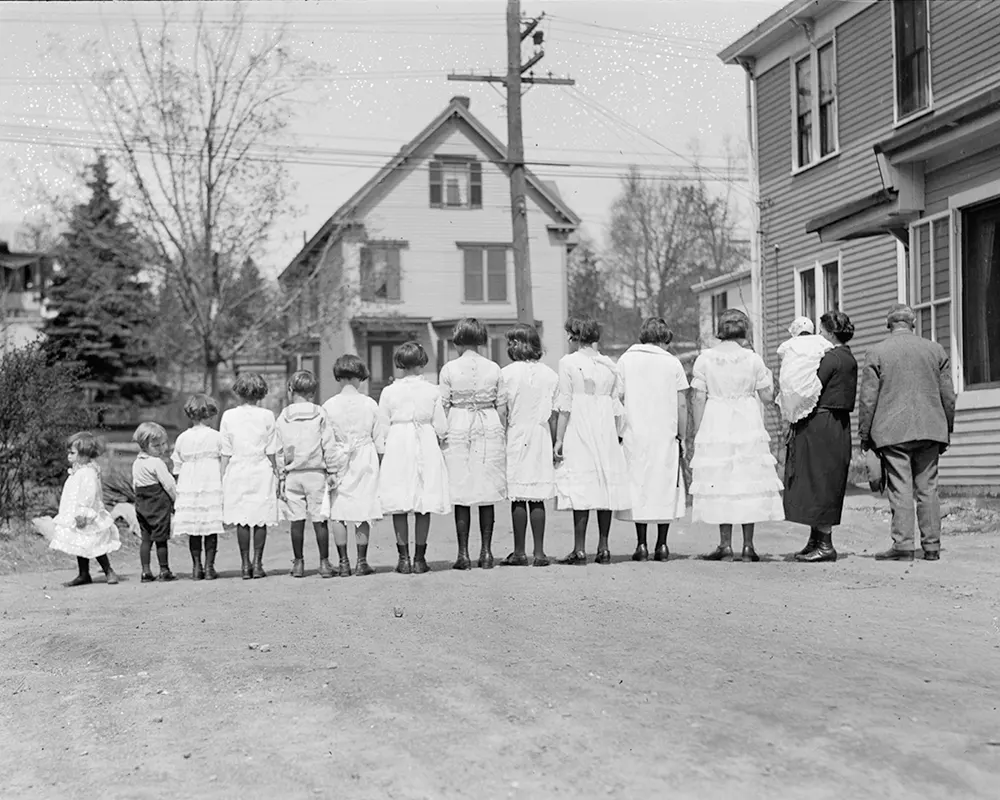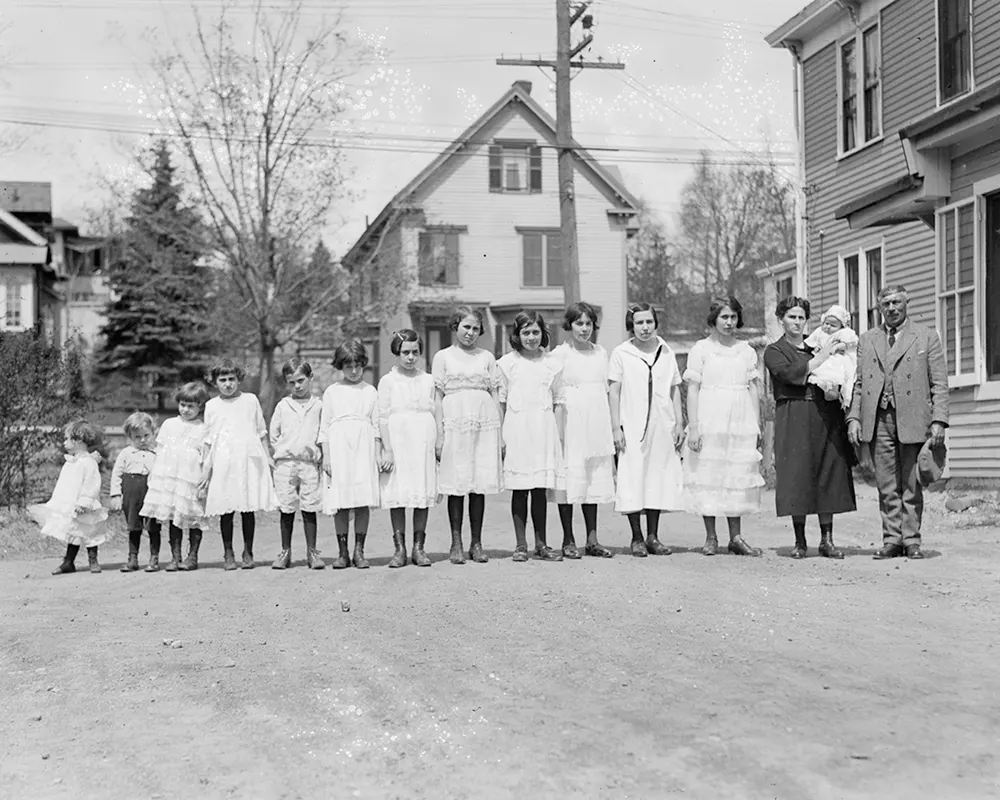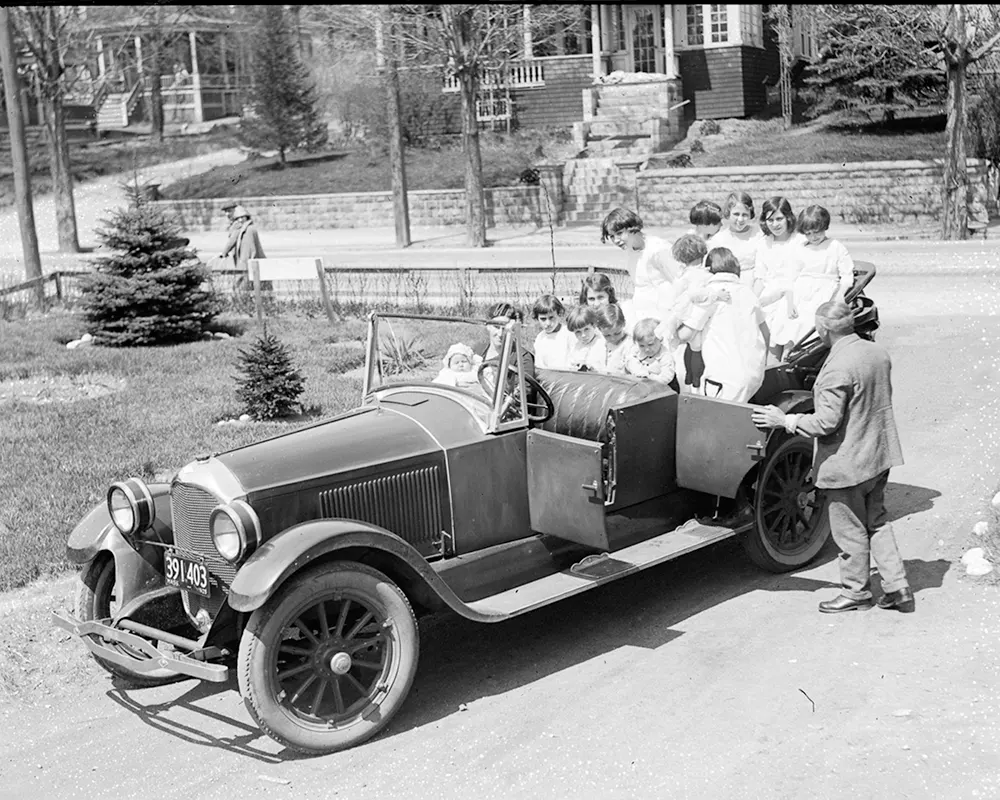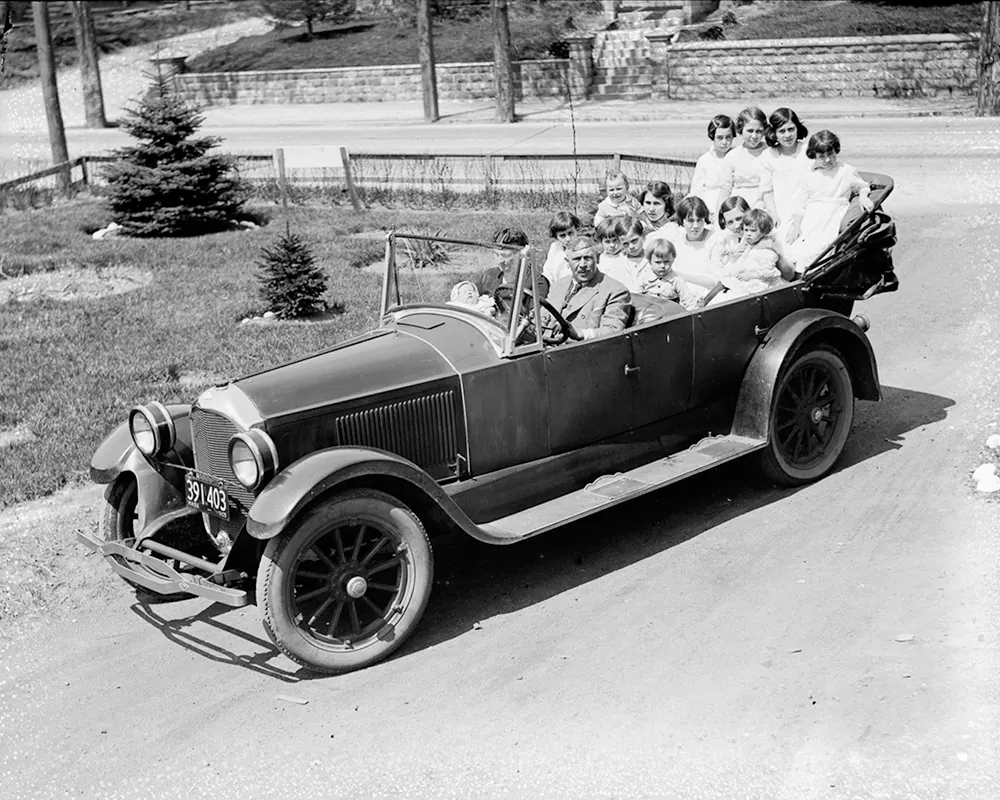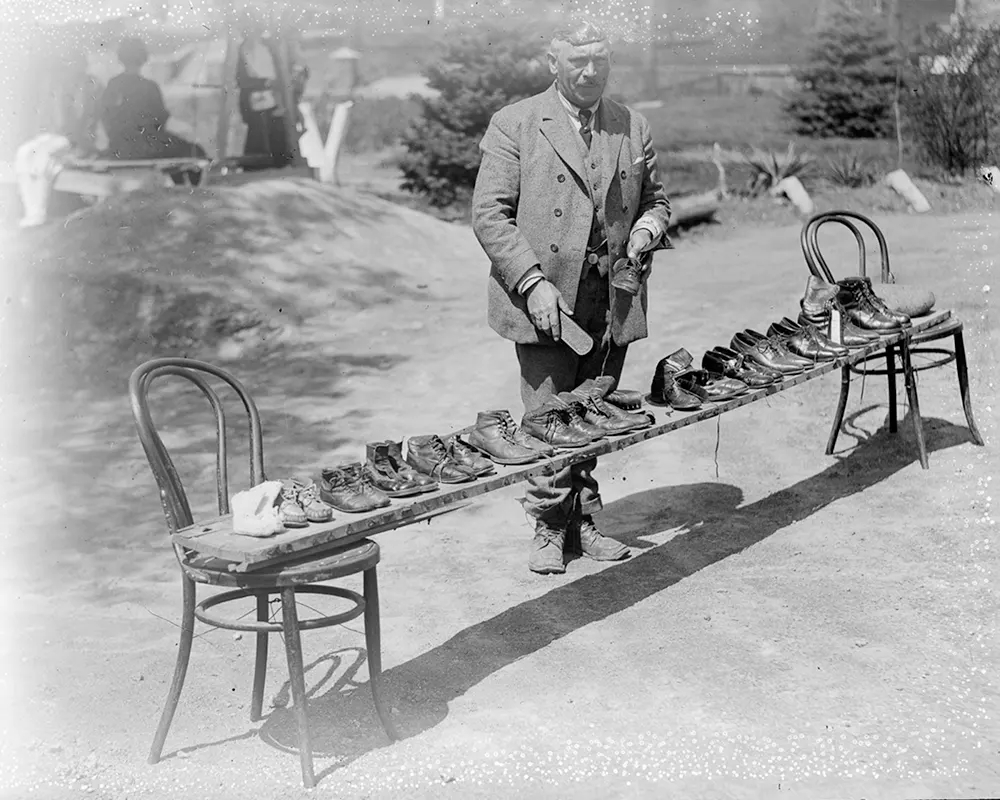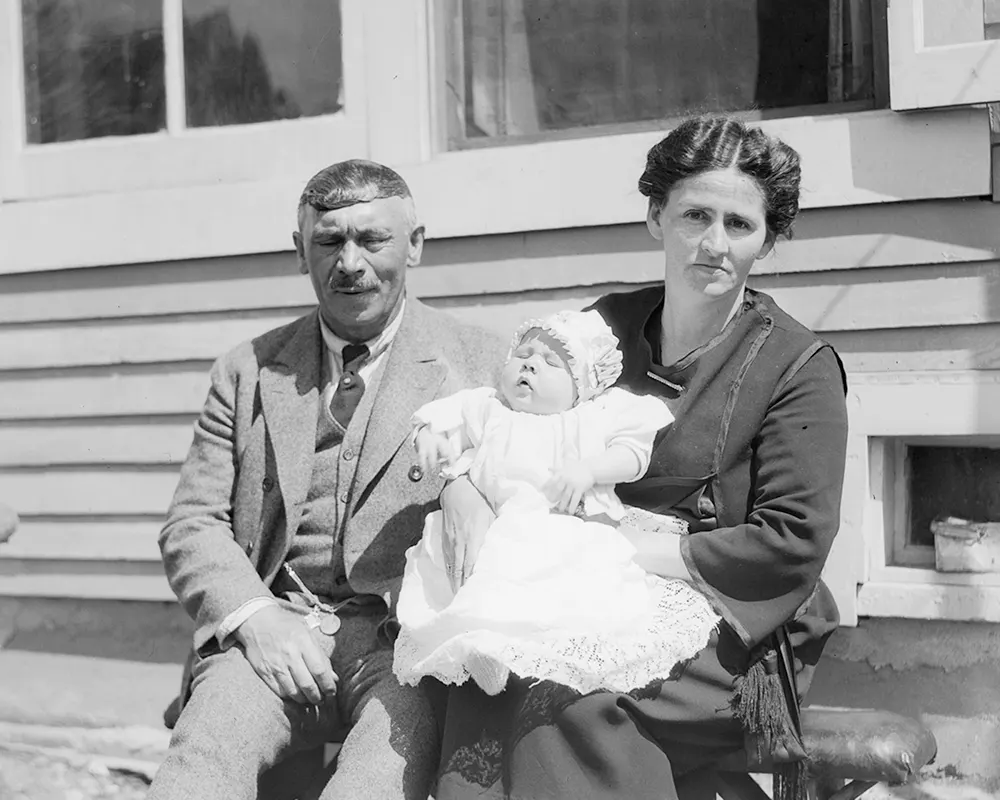Their massive family was so unusual that photographer Leslie Jones from the Boston-Herald Traveler visited their home to document scenes of the family. Jones’ photographs capture the sprawling brood in detail, from the eldest teenage daughters to the new baby. Maurice Noonan, an Irish immigrant and pub owner, and his wife Mabel were proud dad and mom to 13 children during this period. The family including, 10 girls, two boys, and a baby whose sex we don’t know, lined up gamely for photos, showed off their daunting shoe-polishing routine, and, most impressively, demonstrated how they could all pile into a single car. Fitting the whole clan under a single umbrella proves too much of a challenge, though. Recently, some of Maurice and Mabel’s grandchildren stepped forward and identified their family photos when they saw the pictures circulating online. They shared the tragic news that the mother, Mabel Metcalf Noonan would sadly pass away, along with their youngest child, about four years after these photos were taken, leaving Maurice to raise 12 children on his own.
In the early nineteenth century, the typical American woman had between seven and eight live births in her lifetime and people probably lived fewer than forty years on average. But America was also distinctive. First, its fertility transition began in the late eighteenth or early nineteenth century at the latest. Other Western nations began their sustained fertility declines in the late nineteenth or early twentieth century, with the exception of France, whose decline also began early. Second, the fertility rate in America commenced its sustained decline long before that of mortality. This contrasts with the more typical demographic transition in which mortality decline precedes or occurs simultaneously with fertility decline. American mortality did not experience a sustained and irreversible decline until about the 1870s. Third, both these processes were influenced by America’s very high level of net in-migration and also by the significant population redistribution to frontier areas and later to cities, towns, and suburbs. Up until the Great Recession, the number of babies born per woman in the United States had been quite stable for the previous three decades. The birth rate fluctuated within a relatively narrow range, often along with economic conditions, with fewer babies born during lean times and with births recovering when economic growth was stronger. However, demand factors such as industrialization, urbanization, rising family incomes, public health improvements, and the growth in women’s wages generally reduced the benefits and raised the costs of having many children.
The total fertility rate in the United States after World War II peaked at about 3.8 children per woman in the late 1950s, dropped to below replacement in the early 70s, and by 1999 was at 2 children. Currently, fertility is below replacement among those native-born, and above replacement among immigrant families, most of whom come to the United States from countries with higher fertility. However, the fertility rate of immigrants to the United States has been found to decrease sharply in the second generation, correlating with improved education and income. (Photo credit: Leslie Jones Collection / Boston Public Library / Mashable / Little Things). Notify me of new posts by email.
Δ Subscribe



